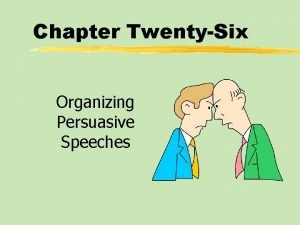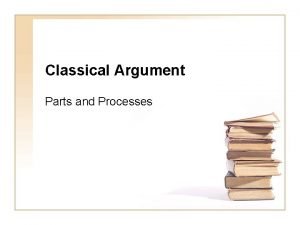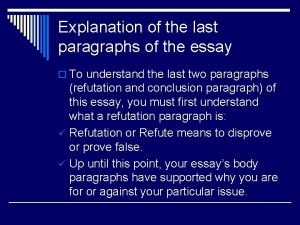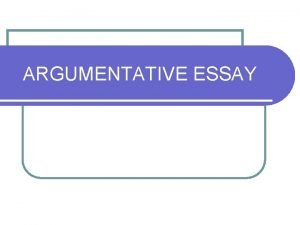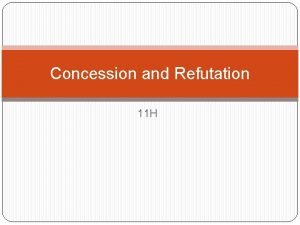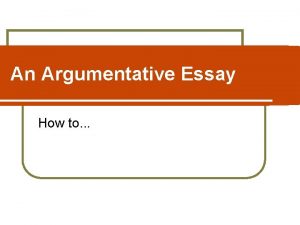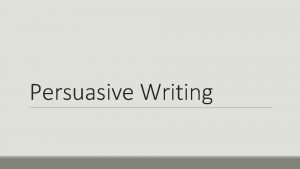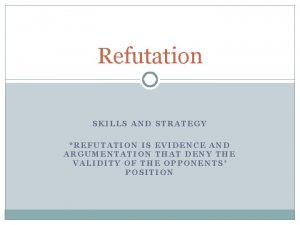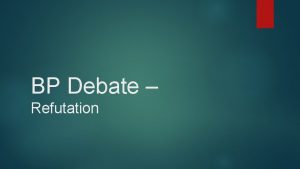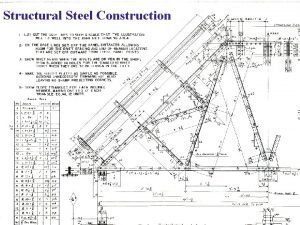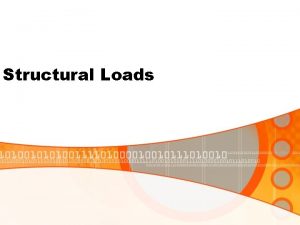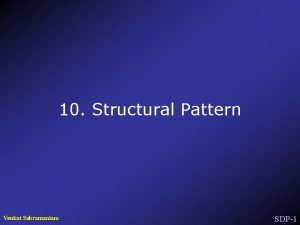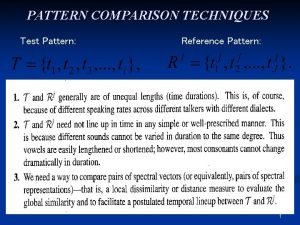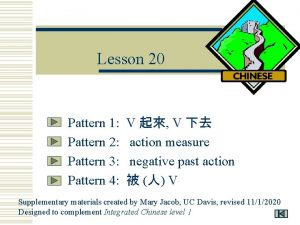Refutation A Structural Pattern for Refutation ICE Identify

















- Slides: 17

Refutation

A Structural Pattern for Refutation ICE: Identify, Critique, and Explain

I. Identify the opponent’s argument. The first step in effective refutation is to let the audience know which of your opponent’s arguments you’ll deconstruct.

C. Critique your opponent’s argument. — • This step is the most important in deconstruction: in this step you must identify the shortcomings of your opponents’ arguments.

E. Explain the significance of your deconstructive effort. — • Here you tell why it matters that your opponent’s argument fails in acceptability, relevance, or sufficiency. Most often this entails a discussion of the role the argument played in your opponents’ broader case and why the absence of this particular argument weakens or negates that case. At this stage you may also compare your argument with your opponents’ in a way that shows that your argument is superior.

Framing

• You must make every effort to control how the other participants in the round perceive, interact with, and consider the arguments in the round.

• The metaphor of “framing” the round implies that the arguments in the round may be presented in various ways, much like a picture may be displayed in a variety of different frames. How a picture is framed —that is, the color and kind of matting, the material and color of the frame, the ornateness or plainness of the frame, the size of the frame relative to the picture itself, and so forth—will influence how the viewer perceives the image. Similarly, in debate the perspective from which an argument is perceived will influence the audience.

For example—How is the smoking debate frame? -Health, Burden on Government -Personal Liberty and Freedom of Choice

• Framing may be divided into two types: prospective and retrospective framing.

Prospective Framing— • Prospective framing refers to the effort to define the terms of the debate at the beginning of the round

Prospective framing is this contest over the territory of debate. • Prospective framing typically takes one of two forms: teams may prospectively frame a round by identifying the question posed by the motion or by defining the terms in the debate.

• Identifying the question posed by the motion refers to the effort to determine the heart of the controversy implied by the motion. • Defining the terms of the debate is another form of prospective framing that will influence the ground on which the debate is contested.

Retrospective Framing— • Retrospective framing occurs when a debater summarizes and recasts his arguments in relation to those of his opponents.

• As the name implies, retrospective framing involves looking back over the round from a particular perspective.

Three considerations are key to effective retrospective framing.

• First, effective retrospective framing requires the debater to identify the most germane issues in the round. • Retrospective framing also requires that you consider the organization of the issues you will present. Finally, once you have selected the issues and organized them properly, you need to demonstrate that your arguments have prevailed in each case or, if they haven’t, to show that the issue is less significant than other issues in which you have prevailed.
 Refutation organizational pattern
Refutation organizational pattern A chronological pattern of arrangement follows the
A chronological pattern of arrangement follows the Icing
Icing Clear ice vs rime ice
Clear ice vs rime ice Design patterns structural
Design patterns structural Refutation rhetorical definition
Refutation rhetorical definition Refutation transition words
Refutation transition words Introduction narration confirmation refutation conclusion
Introduction narration confirmation refutation conclusion Explanation
Explanation How to write a refutation paragraph
How to write a refutation paragraph Concession and refutation examples
Concession and refutation examples Introduction narration confirmation refutation conclusion
Introduction narration confirmation refutation conclusion Ai 781
Ai 781 How to write a refutation paragraph
How to write a refutation paragraph Essay paragraph example
Essay paragraph example Concession and refutation
Concession and refutation Refutation paragraph examples
Refutation paragraph examples Rhetorical question hook
Rhetorical question hook
